Immunology/Inflammation
The immune and inflammation-related pathway including the Toll-like receptors pathway, the B cell receptor signaling pathway, the T cell receptor signaling pathway, etc.
Toll-like receptors (TLRs) play a central role in host cell recognition and responses to microbial pathogens. TLR4 initially recruits TIRAP and MyD88. MyD88 then recruits IRAKs, TRAF6, and the TAK1 complex, leading to early-stage activation of NF-κB and MAP kinases [1]. TLR4 is endocytosed and delivered to intracellular vesicles and forms a complex with TRAM and TRIF, which then recruits TRAF3 and the protein kinases TBK1 and IKKi. TBK1 and IKKi catalyze the phosphorylation of IRF3, leading to the expression of type I IFN [2].
BCR signaling is initiated through ligation of mIg under conditions that induce phosphorylation of the ITAMs in CD79, leading to the activation of Syk. Once Syk is activated, the BCR signal is transmitted via a series of proteins associated with the adaptor protein B-cell linker (Blnk, SLP-65). Blnk binds CD79a via non-ITAM tyrosines and is phosphorylated by Syk. Phospho-Blnk acts as a scaffold for the assembly of the other components, including Bruton’s tyrosine kinase (Btk), Vav 1, and phospholipase C-gamma 2 (PLCγ2) [3]. Following the assembly of the BCR-signalosome, GRB2 binds and activates the Ras-guanine exchange factor SOS, which in turn activates the small GTPase RAS. The original RAS signal is transmitted and amplified through the mitogen-activated protein kinase (MAPK) pathway, which including the serine/threonine-specific protein kinase RAF followed by MEK and extracellular signal related kinases ERK 1 and 2 [4]. After stimulation of BCR, CD19 is phosphorylated by Lyn. Phosphorylated CD19 activates PI3K by binding to the p85 subunit of PI3K and produce phosphatidylinositol-3,4,5-trisphosphate (PIP3) from PIP2, and PIP3 transmits signals downstream [5].
Central process of T cells responding to specific antigens is the binding of the T-cell receptor (TCR) to specific peptides bound to the major histocompatibility complex which expressed on antigen-presenting cells (APCs). Once TCR connected with its ligand, the ζ-chain–associated protein kinase 70 molecules (Zap-70) are recruited to the TCR-CD3 site and activated, resulting in an initiation of several signaling cascades. Once stimulation, Zap-70 forms complexes with several molecules including SLP-76; and a sequential protein kinase cascade is initiated, consisting of MAP kinase kinase kinase (MAP3K), MAP kinase kinase (MAPKK), and MAP kinase (MAPK) [6]. Two MAPK kinases, MKK4 and MKK7, have been reported to be the primary activators of JNK. MKK3, MKK4, and MKK6 are activators of P38 MAP kinase [7]. MAP kinase pathways are major pathways induced by TCR stimulation, and they play a key role in T-cell responses.
Phosphoinositide 3-kinase (PI3K) binds to the cytosolic domain of CD28, leading to conversion of PIP2 to PIP3, activation of PKB (Akt) and phosphoinositide-dependent kinase 1 (PDK1), and subsequent signaling transduction [8].
References
[1] Kawai T, Akira S. The role of pattern-recognition receptors in innate immunity: update on Toll-like receptors[J]. Nature immunology, 2010, 11(5): 373-384.
[2] Kawai T, Akira S. Toll-like receptors and their crosstalk with other innate receptors in infection and immunity[J]. Immunity, 2011, 34(5): 637-650.
[3] Packard T A, Cambier J C. B lymphocyte antigen receptor signaling: initiation, amplification, and regulation[J]. F1000Prime Rep, 2013, 5(40.10): 12703.
[4] Zhong Y, Byrd J C, Dubovsky J A. The B-cell receptor pathway: a critical component of healthy and malignant immune biology[C]//Seminars in hematology. WB Saunders, 2014, 51(3): 206-218.
[5] Baba Y, Matsumoto M, Kurosaki T. Calcium signaling in B cells: regulation of cytosolic Ca 2+ increase and its sensor molecules, STIM1 and STIM2[J]. Molecular immunology, 2014, 62(2): 339-343.
[6] Adachi K, Davis M M. T-cell receptor ligation induces distinct signaling pathways in naive vs. antigen-experienced T cells[J]. Proceedings of the National Academy of Sciences, 2011, 108(4): 1549-1554.
[7] Rincón M, Flavell R A, Davis R A. The Jnk and P38 MAP kinase signaling pathways in T cell–mediated immune responses[J]. Free Radical Biology and Medicine, 2000, 28(9): 1328-1337.
[8] Bashour K T, Gondarenko A, Chen H, et al. CD28 and CD3 have complementary roles in T-cell traction forces[J]. Proceedings of the National Academy of Sciences, 2014, 111(6): 2241-2246.
Targets for Immunology/Inflammation
- Cyclic GMP-AMP Synthase(1)
- Apoptosis(137)
- 5-Lipoxygenase(18)
- TLR(106)
- Papain(2)
- PGDS(1)
- PGE synthase(26)
- SIKs(10)
- IκB/IKK(83)
- AP-1(2)
- KEAP1-Nrf2(47)
- NOD1(1)
- NF-κB(265)
- Interleukin Related(129)
- 15-lipoxygenase(2)
- Others(10)
- Aryl Hydrocarbon Receptor(35)
- CD73(16)
- Complement System(46)
- Galectin(30)
- IFNAR(19)
- NO Synthase(78)
- NOD-like Receptor (NLR)(37)
- STING(84)
- Reactive Oxygen Species(434)
- FKBP(14)
- eNOS(4)
- iNOS(24)
- nNOS(21)
- Glutathione(37)
- Adaptive Immunity(144)
- Allergy(129)
- Arthritis(25)
- Autoimmunity(134)
- Gastric Disease(64)
- Immunosuppressants(27)
- Immunotherapeutics(3)
- Innate Immunity(411)
- Pulmonary Diseases(76)
- Reactive Nitrogen Species(43)
- Specialized Pro-Resolving Mediators(42)
- Reactive Sulfur Species(24)
Products for Immunology/Inflammation
- Cat.No. 상품명 정보
-
GC49887
7-(β-Hydroxyethyl)theophylline-d6
An internal standard for the quantification of 7-(β-hydroxyethyl)theophylline

-
GC45707
7-Azido-4-methylcoumarin
A fluorescent H2S probe

-
GC40978
7-epi Maresin 1
7-epi Maresin 1 is the inactive 7(S) epimer of Maresin 1, which contains a 7(R) hydroxyl group.

-
GC49312
7-Fluoro-2,1,3-benzoxadiazole-4-sulfonate (ammonium salt)
7-Fluoro-2,1,3-benzoxadiazole-4-sulfonate(암모늄염)는 형광 표지입니다.

-
GC49051
7-hydroxy Methotrexate
7-하이드록시 메토트렉세이트는 메토트렉세이트의 주요 대사 산물입니다.

-
GC42608
7-hydroxy Methotrexate (sodium salt)
7-hydroxy Methotrexate (7-hydroxy MTX) is a phase I metabolite of MTX, which is converted by hepatic aldehyde oxidases.
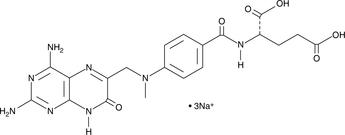
-
GC46241
7-keto Cholesterol-d7
7-keto Cholesterol is a bioactive sterol and a major oxysterol component of oxidized LDL

-
GC48880
7-Methoxyflavone
7-Methoxyflavone은 Zornia brasiliensis에서 분리된 화합물입니다.

-
GC13982
7-NINA
non-selective NOS inhibitor

-
GC12309
7-Nitroindazole
7-Nitroindazole은 항통각 및 심혈관 효과가 있는 선택적 nNOS 억제제입니다.

-
GC42616
7-oxo Staurosporine
7-oxo Staurosporine is an antibiotic originally isolated from S.

-
GC52211
7-[1-(1H)-Tetrazolylacetamido]desacetoxycephalosporanic Acid
A potential impurity in commercial preparations of cefazolin
![7-[1-(1H)-Tetrazolylacetamido]desacetoxycephalosporanic Acid Chemical Structure 7-[1-(1H)-Tetrazolylacetamido]desacetoxycephalosporanic Acid Chemical Structure](/media/struct/GC5/GC52211.png)
-
GC41136
8(S),15(S)-DiHETE
8(S),15(S)-DiHETE is formed when 15(S)-HETE is subjected to further oxidation by 15-LO.
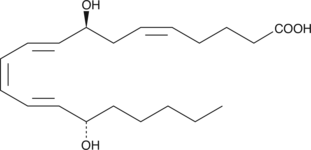
-
GC42623
8-Bromoguanosine
8-Bromoguanosine is a brominated derivative of guanosine.

-
GC35199
8-Deoxygartanin
8-Deoxygartanin, G.
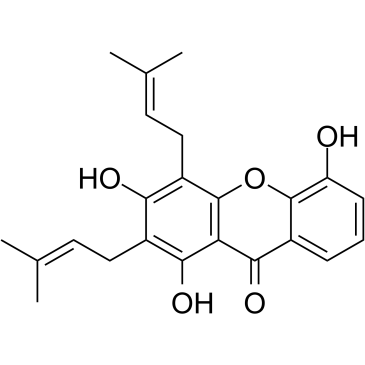
-
GC42627
8-Hydroxyguanine (hydrochloride)
8-Hydroxyguanine is produced by oxidative degradation of DNA by hydroxyl radical.

-
GC18426
8-Nitroguanine
8-Nitroguanine is a nitrative guanine derivative formed by oxidative damage to the guanine base in DNA by reactive nitrogen species (RNS) during inflammation and in vitro by reaction of DNA with peroxynitrite and other RNS reagents.
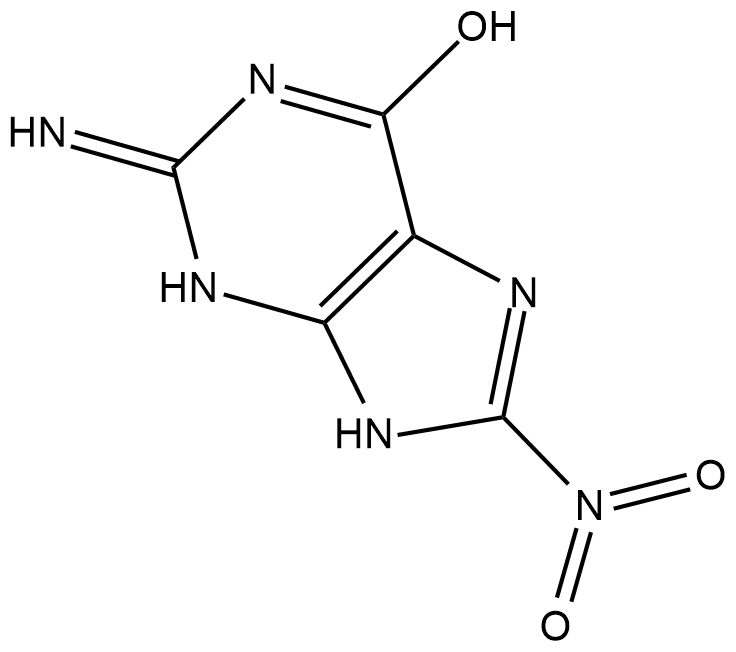
-
GN10212
8-O-Acetyl shanzhiside methyl ester
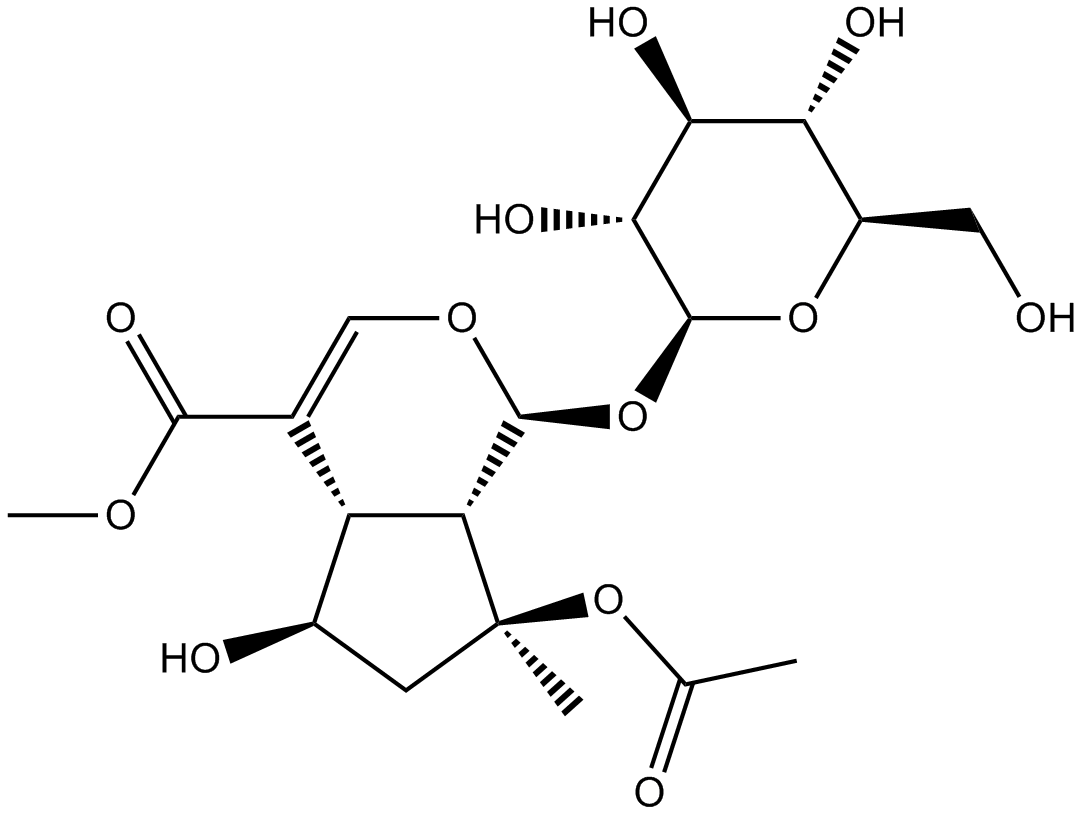
-
GC49275
8-Oxycoptisine
8-옥시콥티신은 항암 활성이 있는 천연 프로토베르베린 알칼로이드입니다.

-
GC46748
9(E),11(E)-12-nitro Conjugated Linoleic Acid
A nitrated fatty acid

-
GC46749
9(E),11(E)-9-nitro Conjugated Linoleic Acid
A nitrated fatty acid

-
GC42633
9(E)-Erythromycin A oxime
(9E)-Erythromycin A oxime is a metabolite of the semisynthetic antibiotic roxithromycin .

-
GC46753
9(S),12(S),13(S)-TriHOME
An oxylipin

-
GC40324
9(S)-PAHSA
9-PAHSA is a newly identified endogenous lipid that belongs to a collection of branched fatty acid esters of hydroxy fatty acids (FAHFAs).

-
GC46757
9(Z),11(E)-Conjugated Linoleic Acid (sodium salt)
An isomer of linoleic acid

-
GC42642
9,10-Anthracenediyl-bis(methylene)dimalonic Acid
9,10-안트라센디일-비스(메틸렌)디말론산(ABMDMA)은 단일항 산소 생성(SOG)을 감지하는 데 사용되는 생물학적 염료 및 지시약입니다. 9,10-안트라센디일-비스(메틸렌)디말론산은 안트라센의 수용성 유도체입니다. 9,10-안트라센디일-비스(메틸렌)디말론산은 일중항 산소에 의해 해당 엔도퍼옥사이드로 광표백될 수 있습니다. 이 반응은 400 nm에서 흡광도 감소를 기록하여 분광광도계로 모니터링할 수 있습니다.

-
GC42644
9-Deazaguanine
9-Deazaguanine is an analog of guanine that acts as an inhibitor of purine nucleoside phosphorylase (PNP; Kd = 160 nM).

-
GC42648
9-Methylstreptimidone
9-Methylstreptimidone is a microbial metabolite originally isolated from Streptomyces sp.

-
GC42649
9-Nitrooleate
Nitrated unsaturated fatty acids, such as 10- and 12-nitrolinoleate, cholesteryl nitrolinoleate, and nitrohydroxylinoleate, represent a new class of endogenous lipid-derived signalling molecules.

-
GC42653
9-OxoOTrE
9-OxoOTrE is produced by the oxidation of 9-HpOTrE.

-
GC40325
9-PAHSA
Branched fatty acid esters of hydroxy fatty acids (FAHFAs) are newly identified endogenous lipids regulated by fasting and high-fat feeding and associated with insulin sensitivity.

-
GC49237
93-O17O
A cationic lipidoid

-
GC49238
93-O17S
A cationic lipidoid

-
GC45960
9c(i472)
9c(i472)는 IC50 값이 0.19 μ인 15-LOX-1(15-리폭시게나제-1)의 강력한 억제제입니다.

-
GC45930
A 26771B
A macrolide antibiotic

-
GC42660
A-39183A
A-39183A is an active component of the A-39183 antibiotic complex produced by aerobic fermentation of Streptomyces NRRL 12049.

-
GC42661
A-54556B
A-54556B is a natural acyldepsipeptide (ADEP) antibiotic isolated from the fermentation broth of S.

-
GC18936
A-83016F
A-83016F is an aurodox antibiotic isolated from the actinomycete species A83016.
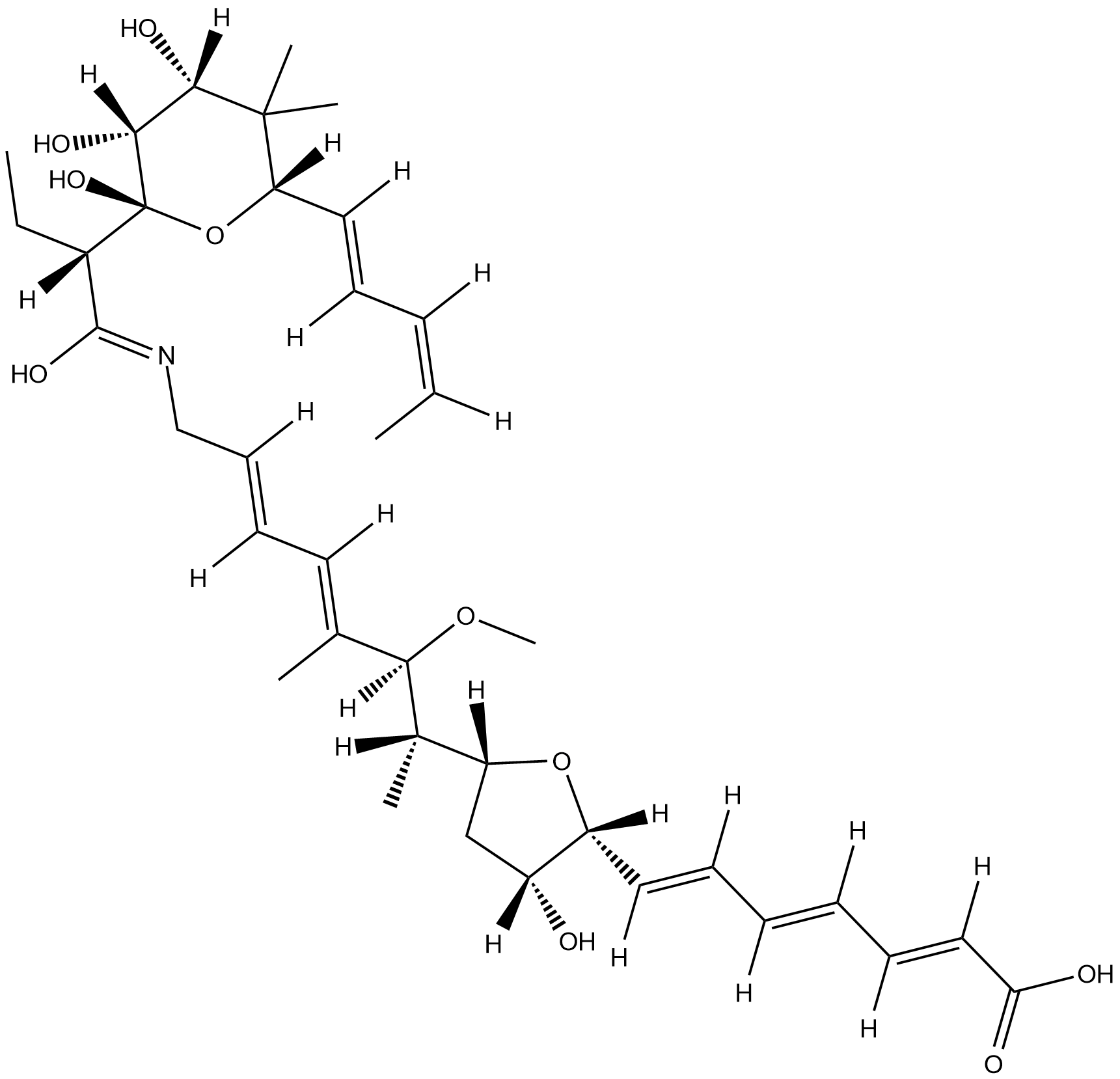
-
GC49309
A-943931 (hydrochloride hydrate)
A histamine H4 receptor antagonist

-
GC35214
A-9758
A-9758은 RORγ 리간드이자 강력한 선택적 RORγt 역작용제(IC50=5nM)이며 IL-17A 방출에 대한 강력한 효능을 나타냅니다.

-
GP10060
a-MSH, amide
a-MSH (α-멜라노사이트 자극 호르몬), 아미드는 멜라노코르틴-1 수용체에 결합하여 G 단백질 운반체를 통해 순환 AMP (cAMP) 신호를 활성화시키고 멜라닌을 합성할 수 있습니다.
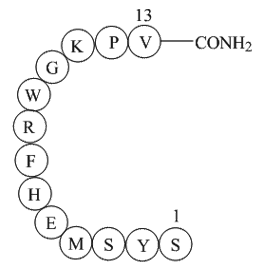
-
GC19496
AAPH
AAPH is a water-soluble azo compound

-
GC42666
AAT-008
AAT-008은 재조합 인간 EP4 및 재조합 쥐 EP4에 대해 각각 0.97 및 6.1nM의 Kis를 갖는 강력하고 선택적이며 경구 활성인 프로스타글란딘 EP4 수용체 길항제입니다.

-
GC65293
AB-680
AB-680은 CD73(외부 뉴클레오티다제)의 매우 강력하고 가역적이며 선택적인 억제제이며, hCD73에 대한 Ki가 4.9pM이고 관련 외부 뉴클레오티다제 CD39에 비해 10,000배 이상의 선택성을 나타냅니다. 항종양 활성.

-
GC42667
Abacavir Carboxylate
Abacavir carboxylate is an inactive metabolite of the HIV-1 reverse transcriptase inhibitor abacavir.

-
GC46767
Abacavir-d4
An internal standard for the quantification of abacavir

-
GC49766
Abafungin
항진균제인 아바펀진은 스테롤-C-24-메틸트랜스퍼라제 효소에 의해 촉매되는 스테롤 측쇄의 C-24 위치에서 트랜스메틸화를 억제합니다.

-
GC42668
ABC34
ABC34 is an inactive control probe for JJH260, the inhibitor of androgen-induced gene 1 (AIG1), an enzyme that hydrolyzes fatty acid esters of hydroxy fatty acids (FAHFAs).

-
GC49745
ABT-263-d8
ABT-263-d8은 Navitoclax라고 표시된 중수소입니다. Navitoclax(ABT-263)는 Bcl-xL, Bcl-2 및 Bcl-w와 같은 여러 항-세포자멸사 Bcl-2 계열 단백질에 결합하는 강력하고 경구 활성인 Bcl-2 계열 단백질 억제제입니다. 1nM 이상.

-
GC42683
Abz-Ala-Pro-Glu-Glu-Ile-Met-Arg-Arg-Gln-EDDnp
Abz-Ala-Pro-Glu-Glu-Ile-Met-Arg-Arg-Gln-EDDnp is a fluorescence-quenched peptide substrate for human neutrophil elastase (kcat/Km = 531 mM-1s-1).

-
GC52499
Abz-Ala-Pro-Glu-Glu-Ile-Met-Arg-Arg-Gln-EDDnp (trifluoroacetate salt)
A sensitive substrate for neutrophil elastase

-
GC42684
Abz-Val-Ala-Asp-Nva-Arg-Asp-Arg-Gln-EDDnp (trifluoroacetate salt)
Abz-Val-Ala-Asp-Nva-Arg-Asp-Arg-Gln-EDDnp is a fluorescence-quenched peptide substrate for human proteinase 3 (kcat/Km = 1,570 mM-1s-1).

-
GC42685
Ac-ANW-AMC
Ac-ANW-AMC는 면역프로테아좀에 대한 형광 기질입니다.

-
GC49704
Ac-FLTD-CMK (trifluoroacetate salt)
An inhibitor of caspase-1, -4, -5, and -11

-
GA20621
Ac-muramic acid
세균 세포벽의 구성 요소입니다. MurNAc의 보호 된 유도체는 Q-1005를 참조하십시오.
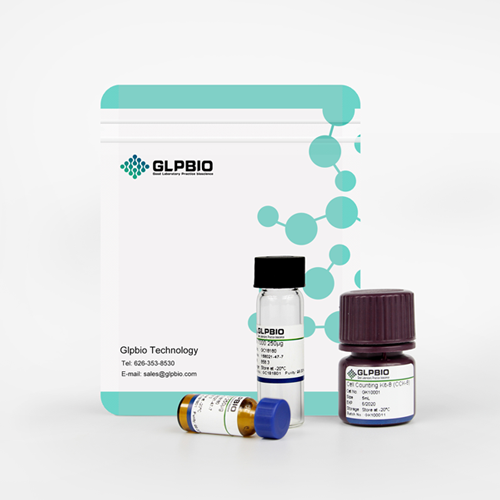
-
GC52372
Ac-VDVAD-AFC (trifluoroacetate salt)
A fluorogenic substrate for caspase-2

-
GC15598
Ac2-26
annexin A1(AnxA1)의 활성 N-말단 펩타이드인 Ac2-26은 허혈 재관류 유발 급성 폐 손상을 약화시킵니다.

-
GC49263
Ac2-26 (human) (ammonium salt)
An annexin A1-mimetic peptide

-
GC35224
Ac2-26 TFA
아넥신 A1(AnxA1)의 활성 N-말단 펩타이드인 Ac2-26 TFA는 허혈 재관류 유발 급성 폐 손상을 약화시킵니다.
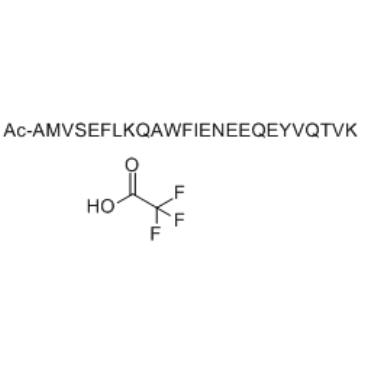
-
GC42691
Aceclofenac ethyl ester
A potential impurity found in commercial preparations of aceclofenac

-
GC42692
Aceclofenac methyl ester
A potential impurity in commercial preparations of aceclofenac

-
GC49911
Acetyl Hexapeptide-38 (trifluoroacetate salt)
A hexapeptide

-
GC42700
Acetyl Pentapeptide-1
Acetyl pentapeptide-1 is a pentapeptide that decreases IL-8 secretion in human keratinocytes when used in combination with acetyl hexapeptide-36 and acetyl hexapeptide-38.

-
GC18443
Acetyl-6-formylpterin
Acetyl-6-formylpterin is an inhibitor of mucosal-associated invariant T (MAIT) cell activation.
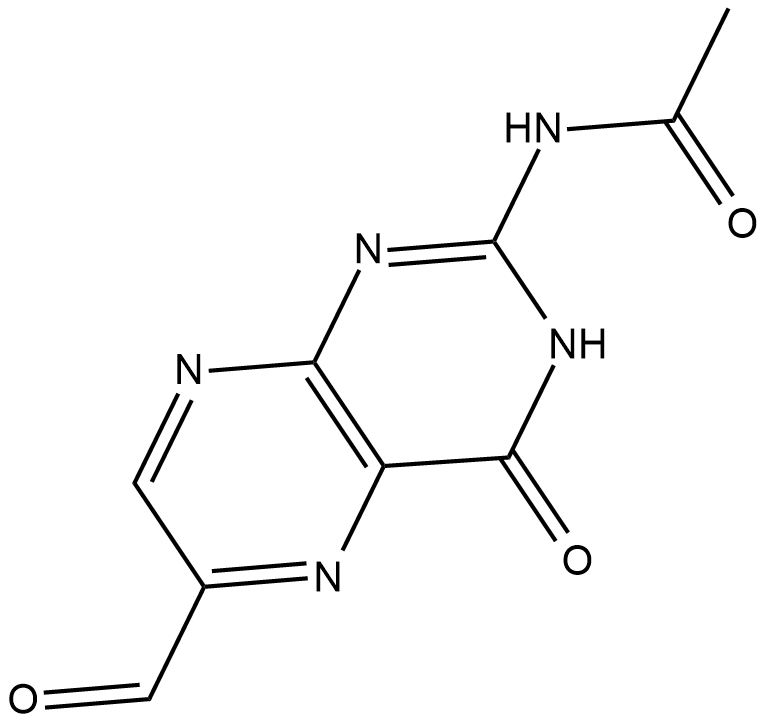
-
GC11786
Acetylcysteine
아세틸시스테인은 시스테인의 N-아세틸 유도체입니다.
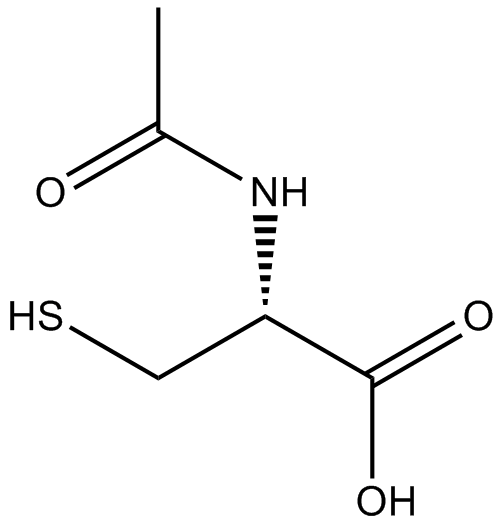
-
GC17416
ACHP
IκB kinase inhibitor
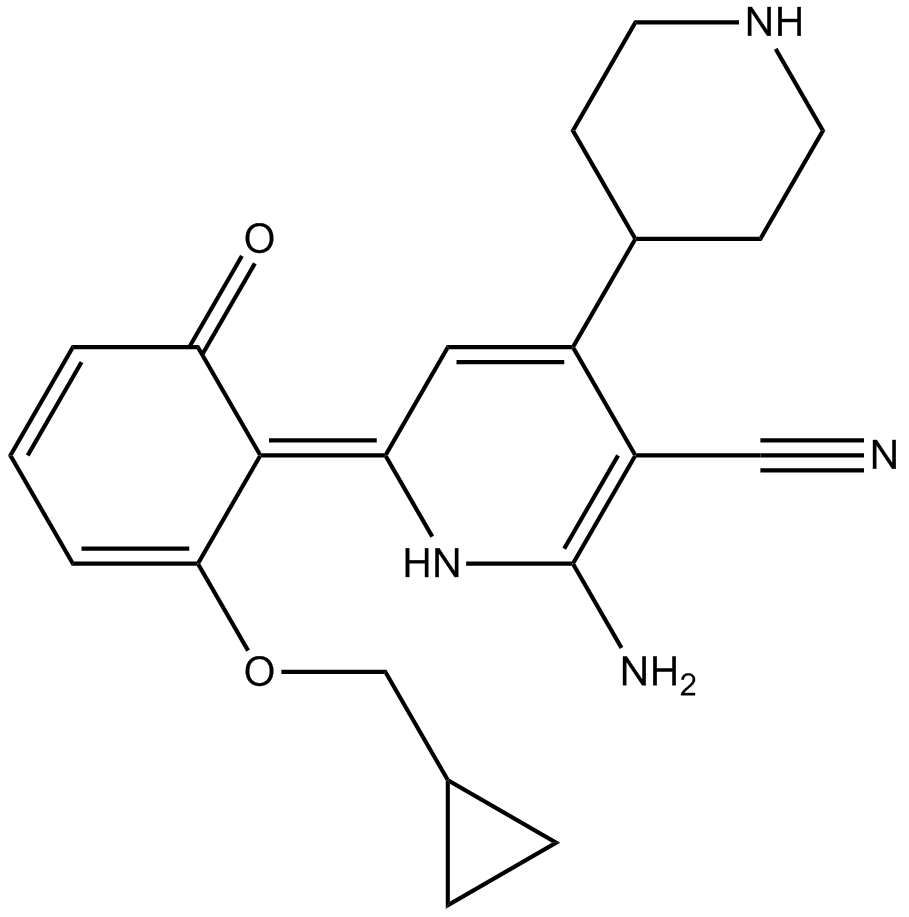
-
GN10536
Aconine
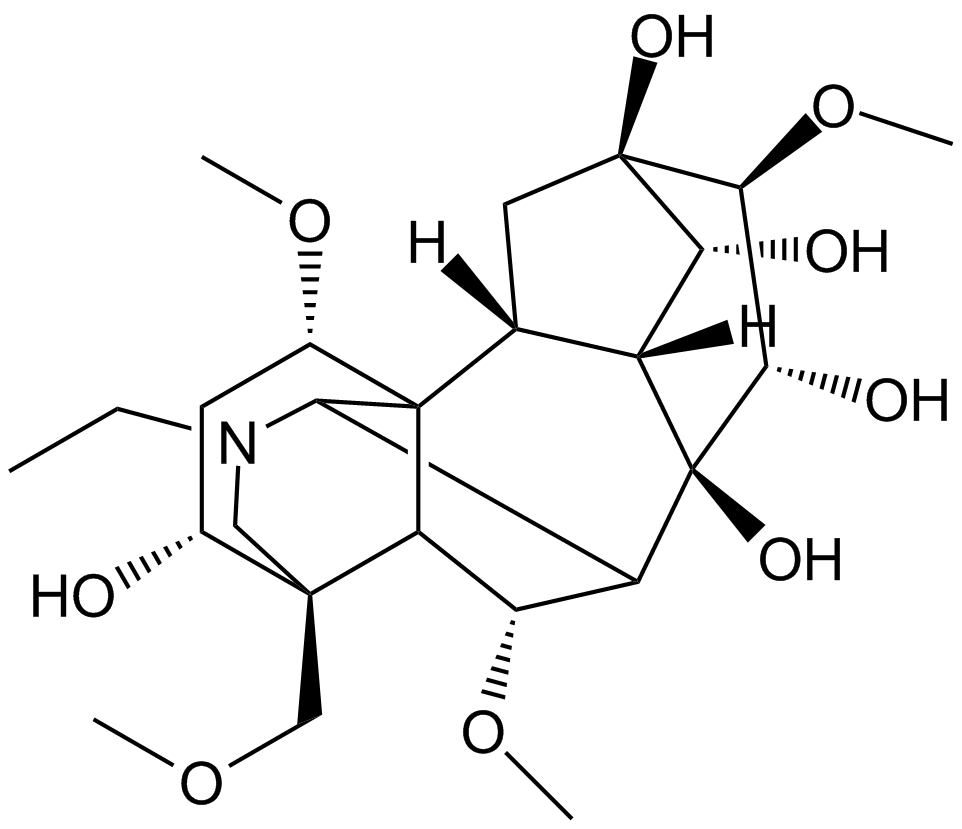
-
GC49804
Acridine
An azaarene

-
GC40645
Actarit
경구 활성 항류마티스 화합물인 Actarit는 II형 콜라겐 유발 관절염을 치료할 가능성이 있습니다.

-
GC41316
Actinopyrone A
Actinopyrone A is a pyrone isolated from S.

-
GC48842
Actiphenol
A bacterial metabolite with antiviral activity

-
GC46797
Acyclovir-d4
An internal standard for the quantification of acyclovir

-
GC46798
Adapalene-d3
An internal standard for the quantification of adapalene

-
GC46805
Adefovir-d4
An internal standard for the quantification of adefovir

-
GC31693
Adelmidrol
Adelmidrol은 부분적으로 PPARγ에 의존하는 중요한 항염증 효과를 발휘합니다.
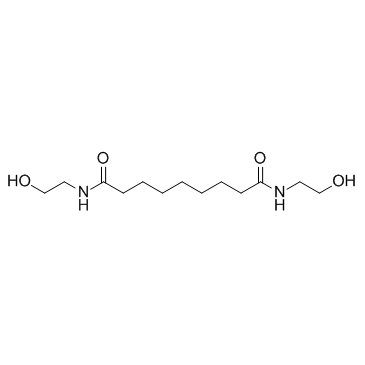
-
GC49285
Adenosine 5’-methylenediphosphate (hydrate)
An inhibitor of ecto-5’-nucleotidase

-
GC60040
ADH-503
ADH-503((Z)-Leukadherin-1 콜린)은 경구 활성 및 알로스테릭 CD11b 작용제입니다. ADH-503은 종양 관련 대식세포의 재분극을 유도하고, 종양 침윤성 면역억제 골수 세포의 수를 감소시키며, 수지상 세포 반응을 향상시킵니다.
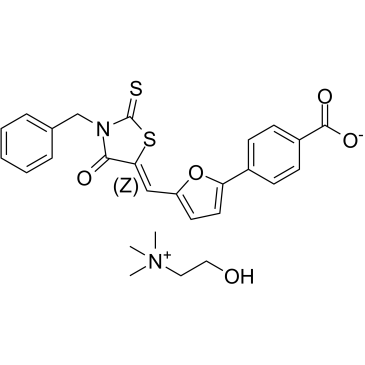
-
GC42742
ADT-OH
ADT-OH는 황화수소 방출 공여체입니다. ADT-OH는 FADD를 상향 조절하여 세포 사멸을 유도하고 생체 내에서 흑색종의 발달을 억제합니다. ADT-OH는 암 질환 연구의 잠재력을 가지고 있습니다.

-
GC31649
ADU-S100 (ML RR-S2 CDA)
ADU-S100(ML RR-S2 CDA)(MIW815), 인터페론 유전자 자극제(STING)의 활성제는 강력하고 전신적인 종양 퇴행 및 면역을 유도합니다.

-
GC39161
ADU-S100 disodium salt
ADU-S100 이나트륨 염(MIW815 이나트륨 염)은 인터페론 유전자(STING) 자극제의 활성제입니다.
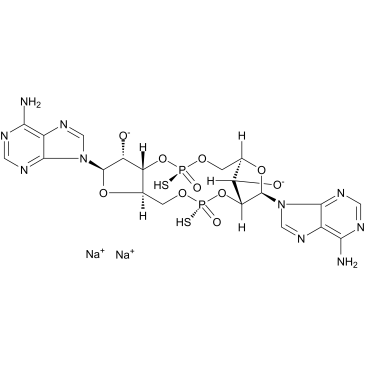
-
GC42743
AEM1
AEM1은 Nrf2 억제제입니다. AEM1은 A549 세포에서 Nrf2 의존성 유전자의 발현을 감소시키고 시험관 내 및 생체 내에서 A549 세포의 성장을 억제합니다.

-
GC63485
Afimetoran
Afimetoran은 염증 및 자가면역 질환 연구에 사용할 수 있는 톨 유사 수용체 길항제입니다.
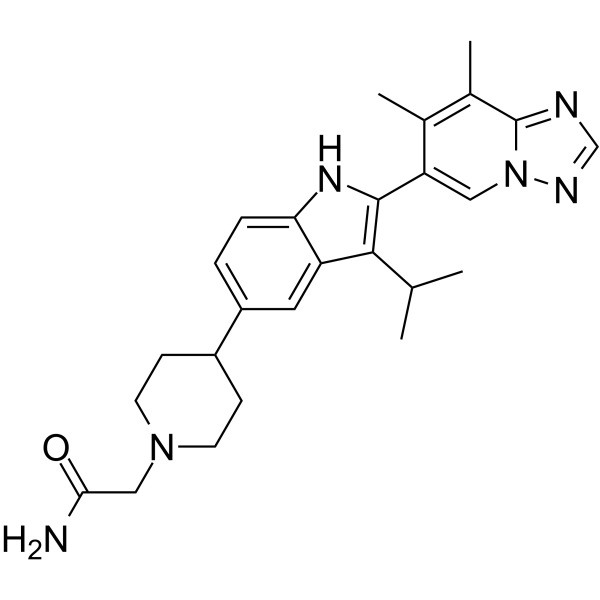
-
GC66396
Agatolimod
클래스 B ODN(oligodeoxynucleotide)인 Agatolimod(ODN 2006)는 TLR9 작용제입니다. 821d96072c2d58d8970e76f526b0f6b8아가톨리모드는 또한 인간을 위한 최적의 CpG 서열이다. 821d96072c2d58d8970e76f526b0f6b8아가톨리모드는 HD11 세포에서 매우 강력한 NO2 및 IL-6 생성을 자극합니다. 821d96072c2d58d8970e76f526b0f6b8아가톨리모드는 유방암 연구에 사용될 수 있습니다. 821d96072c2d58d8970e76f526b0f6b8시퀀스: 5'-tcgtcgttttgtcgttttgtcgtt-3'.821d96072c2d58d8970e76f526b0f6b8

-
GC16831
Agmatine sulfate
Agmatine sulfate는 신경 전달 물질 시스템, 이온 채널 및 산화 질소 합성과 같은 여러 분자 표적에서 조절 작용을 발휘합니다.
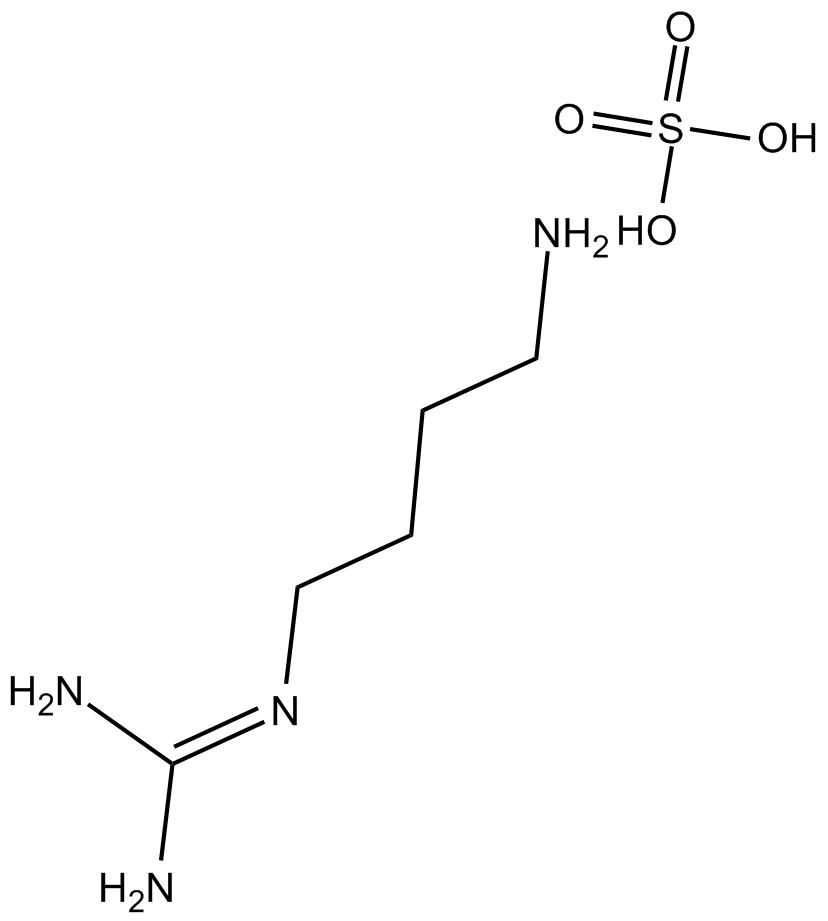
-
GC35271
AHR antagonist 1
AHR 길항제 1(AHR 길항제 1)은 아릴 탄화수소 수용체(AHR) 길항제입니다.
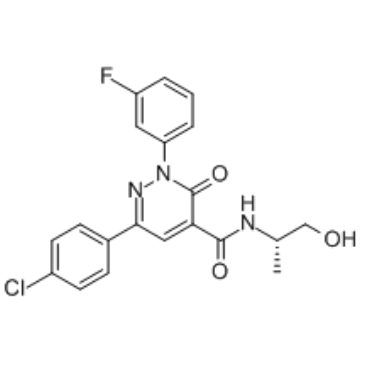
-
GC39669
AHR antagonist 2
AHR 길항제 2는 인간 및 마우스 AhR에 대해 IC50이 0.885 및 2.03nM인 특허 WO2019101641A1, 화합물 실시예 1에서 추출된 강력한 아릴 탄화수소 수용체(AHR) 길항제입니다.
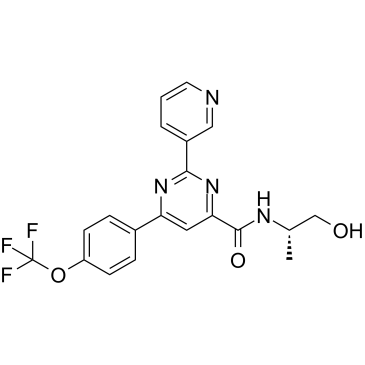
-
GC64275
AHR antagonist 5
특허 WO2018195397, 실시예 39에서 추출된 강력한 경구 활성 아릴 탄화수소 수용체(AHR) 길항제인 AHR 길항제 5는 IC50이 0.5μM 미만입니다. AHR 길항제 5는 체크포인트 억제제 항PD-1과 조합하여 종양 성장을 유의하게 억제합니다.
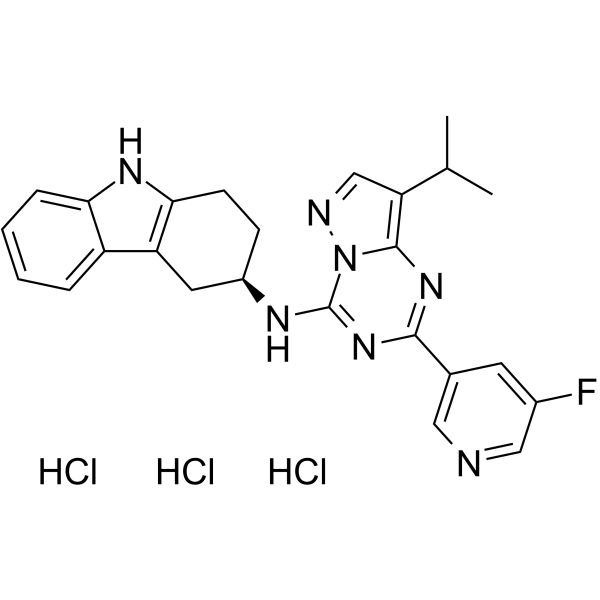
-
GC64208
AHR antagonist 5 free base
AHR 길항제 5 유리 염기는 선택적 경구 활성 아릴 탄화수소 수용체(AHR) 억제제입니다. AHR 길항제 5 유리 염기는 AHR이 세포질에서 핵으로 이동하는 것을 효과적으로 차단합니다. AHR 길항제 5 유리 염기는 다른 수용체, 수송체 및 키나제보다 AHR에 대해 매우 선택적입니다.
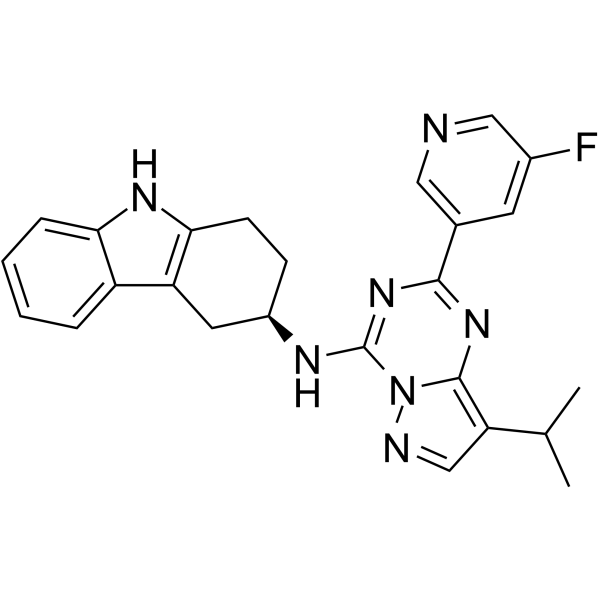
-
GC16120
AI-3
Nrf2/Keap1 and Keap1/Cul3 interaction inhibitor
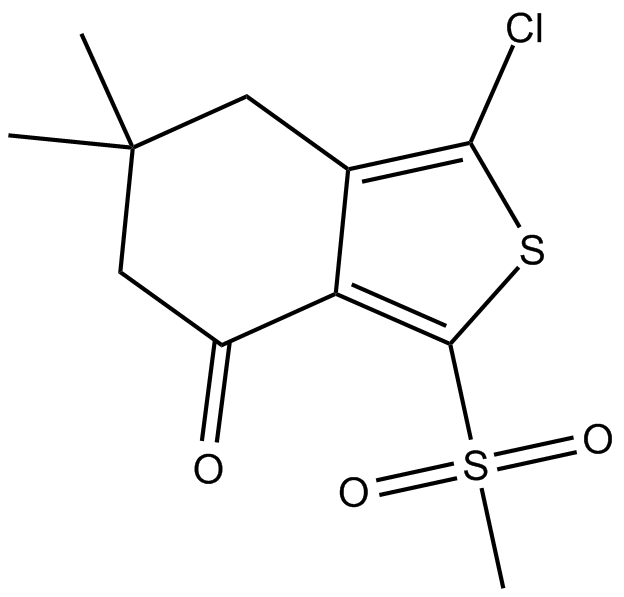
-
GC46821
Ajoene
마늘에서 추출한 화합물인 아조엔은 항혈전 및 항진균제입니다.

-
GC45681
AKP-11
An S1P1 receptor agonist

-
GC42763
Alamethicin F50
Alamethicin F50 is a peptaibol isolated from Trichoderma.

-
GC49773
Albendazole sulfone-d3
An internal standard for the quantification of albendazole sulfone

-
GC48848
Albendazole-d7
Albendazole-d7(SKF-62979-d7)은 Albendazole로 표시된 중수소입니다.

-
GC41080
Albofungin
Albofungin is a xanthone isolated from A.

-
GC42764
Albuterol methyl ether
Salbutamol (albuterol) is a selective β2-adrenergic partial agonist that is used as a bronchodilator.
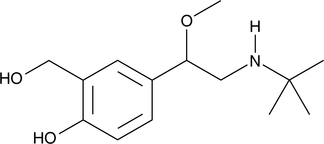
-
GC46826
Alclofenac
An NSAID

-
GC40638
Alclometasone Dipropionate
알클로메타손 디프로피오네이트(Sch 22219)는 스테로이드 화합물입니다.

-
GN10298
Alibiflorin

-
GC42769
all-trans Retinoyl β-D-Glucuronide
all-trans Retinoyl β-D-glucuronide is a metabolite of all-trans retinoic acid formed by the UDP-glucuronosyltransferase (UGT) system.



